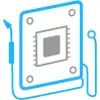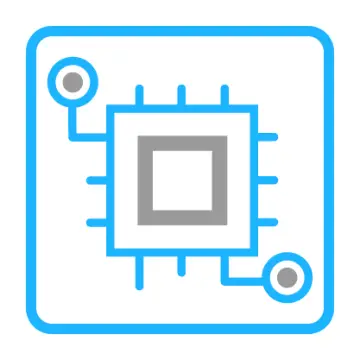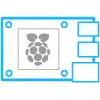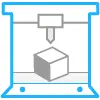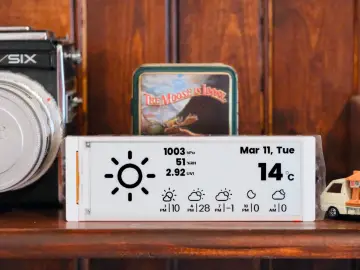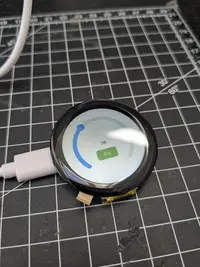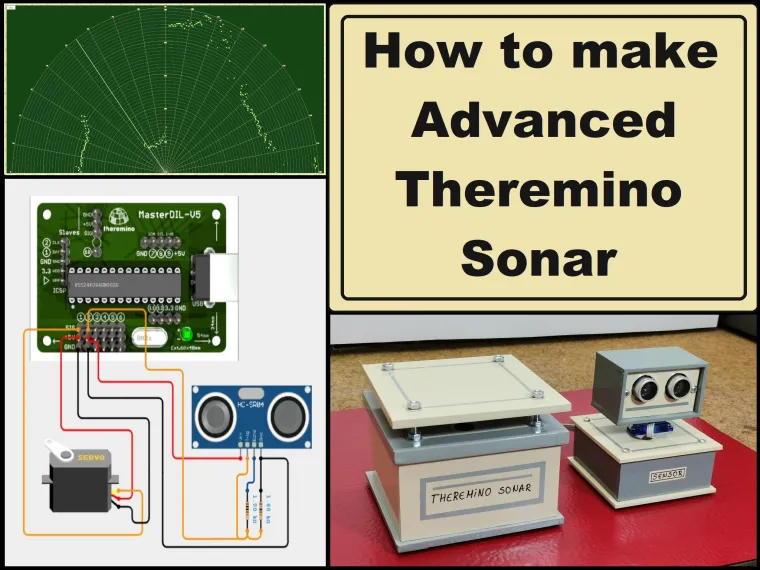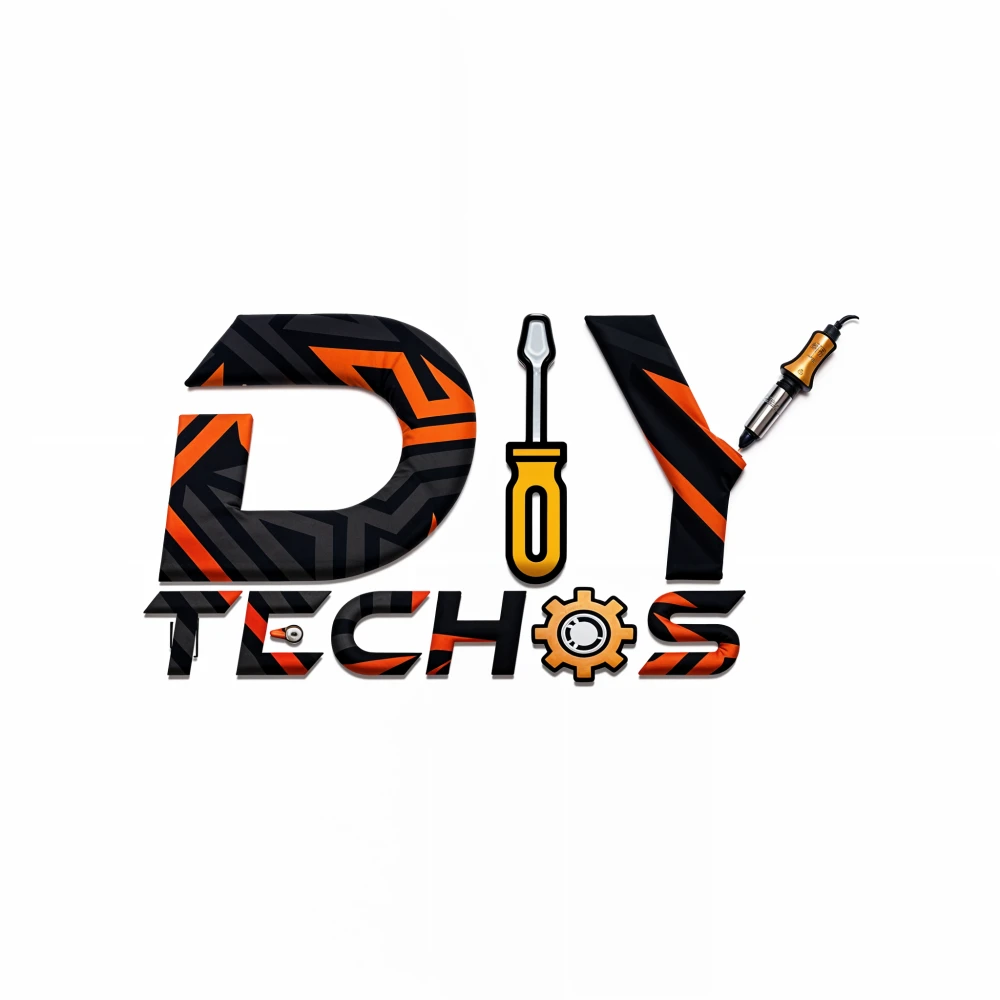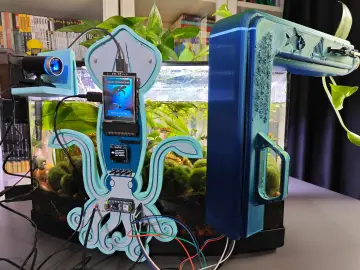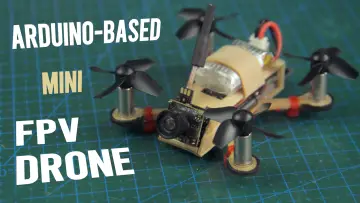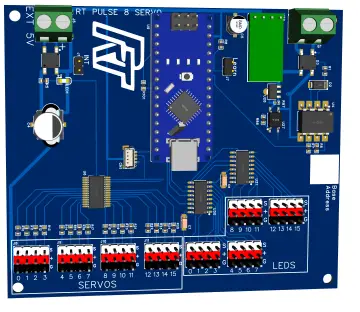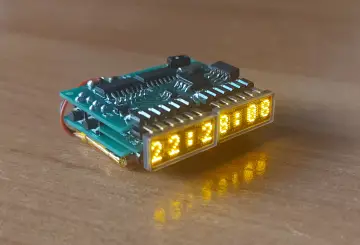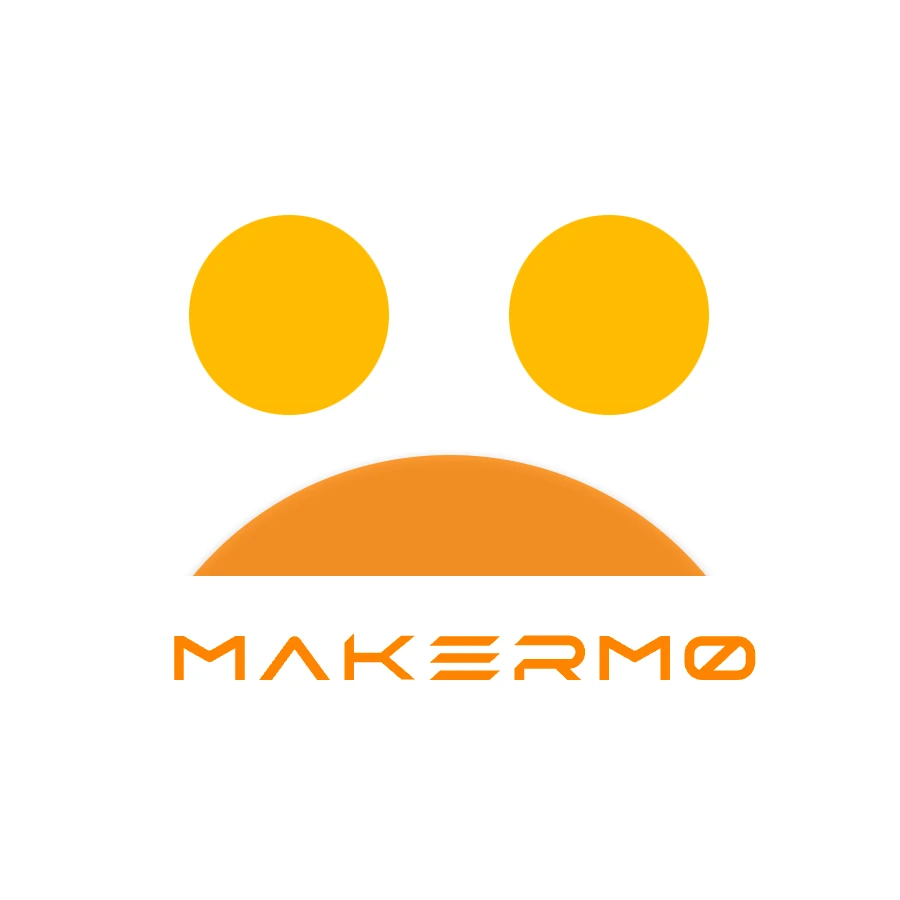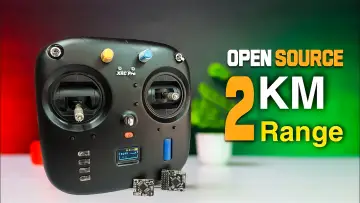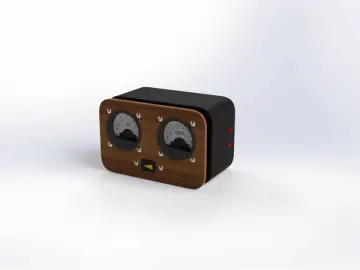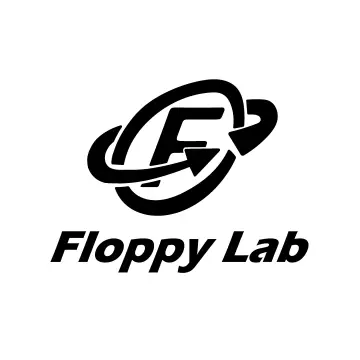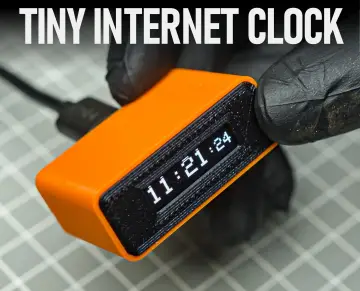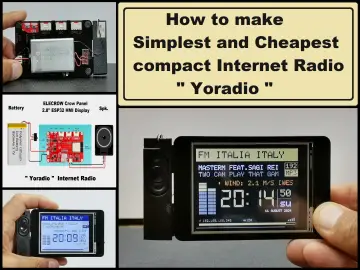Story
Theremino is an open-source platform designed for hobbyists and makers, providing a versatile framework for creating and interfacing with various electronic projects. Unlike similar systems (for example Arduino), the system works immediately, and does not require any firmware programming. The communication between the PC and the external components is done through "Theremino Master" board which is just an input-output device and not a micro programmable controller as Arduino.

You can get the Theremino Master board ready for about twenty dollars on this site or make it yourself, because the code and instructions for making it are free. You now have more than 150 great Windows applications on the Theremino website that allow you to control the components, modules, or sensors connected to the Theremino Master board. The Thermino system uses the power of the PC and the flexibility and low cost of the microcontrollers, so with this combination we can make great devices.
This time I will present you a simple way to make an ultrasonic sonar where the radar-like display is actually a windows-based application with the possibility of more settings. The excellent Windows application was developed by Mauro Roboni, and reworked by Theremino Team, and you can view the original project on the Theremino site .
The device is extremely simple to build, in fact, like all Theremino projects, and consists of only a few components:
- Theremino Master board
- HC-SR04 ultrasonic sensor module
- and a cheap 9g servo

In order to save time, this time I used cases from some of my previous projects.
And now let me explain the installation and setup method in a little more detail.
First we connect the device to a USB port and open the Theremino-Hal application. As we can see in the schematic diagram, the servo motor is connected to PIN1, and the ultrasonic sensor to PIN2 on the Master board. So we need to configure these two pins. For PIN1 we select pin type "Servo_16", and for PIN2 we select pin type "Usound sensor". According to the author's instructions, here you should put "Response speed" = 100 and disable "Remove errors". Also the “Max dist” that you set in the properties of the PIN type “Usund sensor”, in application HAL must match the scale you set in ThereminoRadar application.

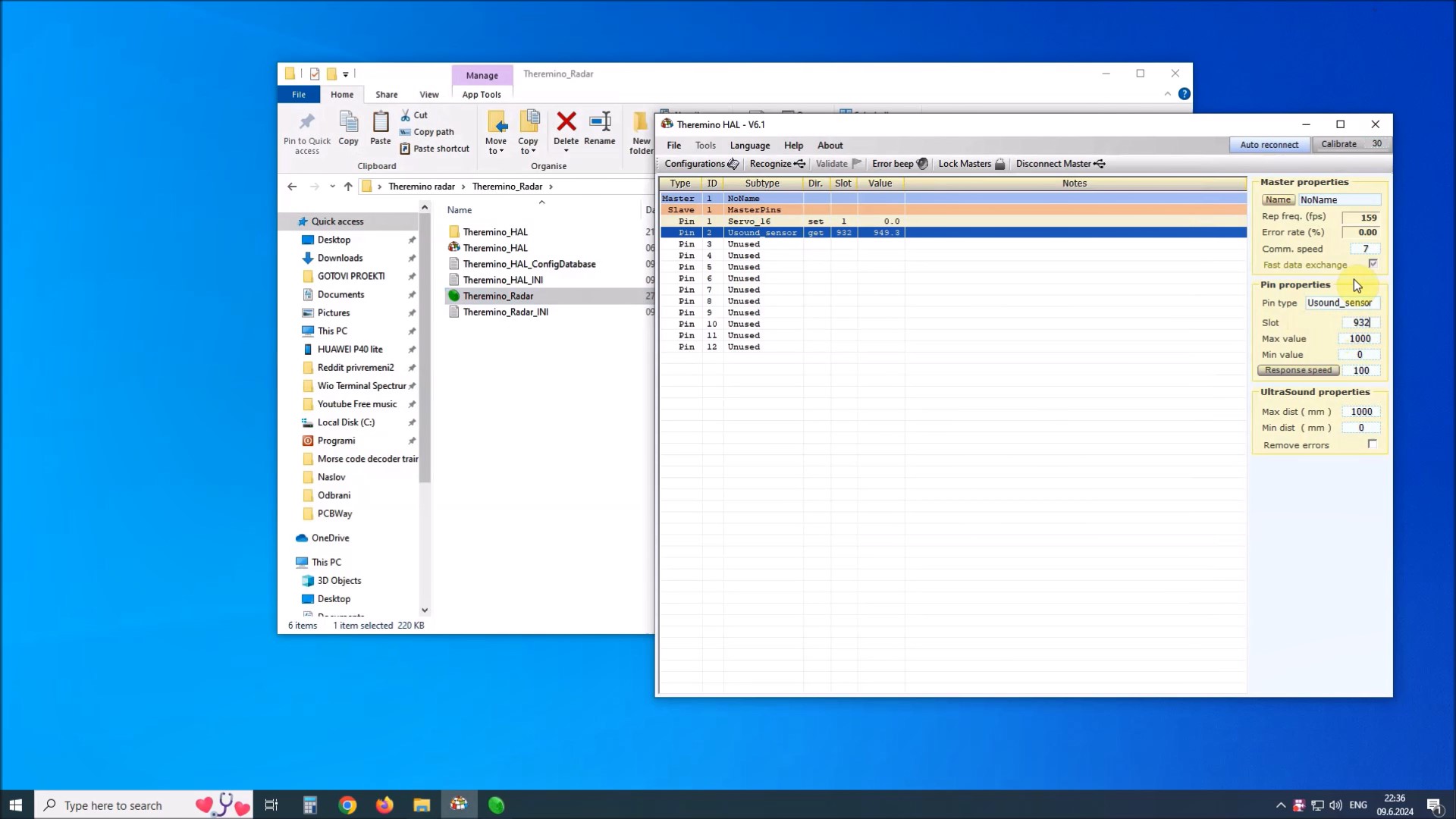
Next, we need to define the slots that should correspond to the ones given in the Theremino Radar application, in our case the Servo slot is 931 and the Usound slot is 932. This completes the setup of the Theremino Hal and we can start testing the the device.
Now let's take a look at the Theremino Radar app. The bottom tab shows the current angle of the ultrasonic sensor, the distance to the obstacle, as well as the defined slots for the servo and the ultrasonic sensor.
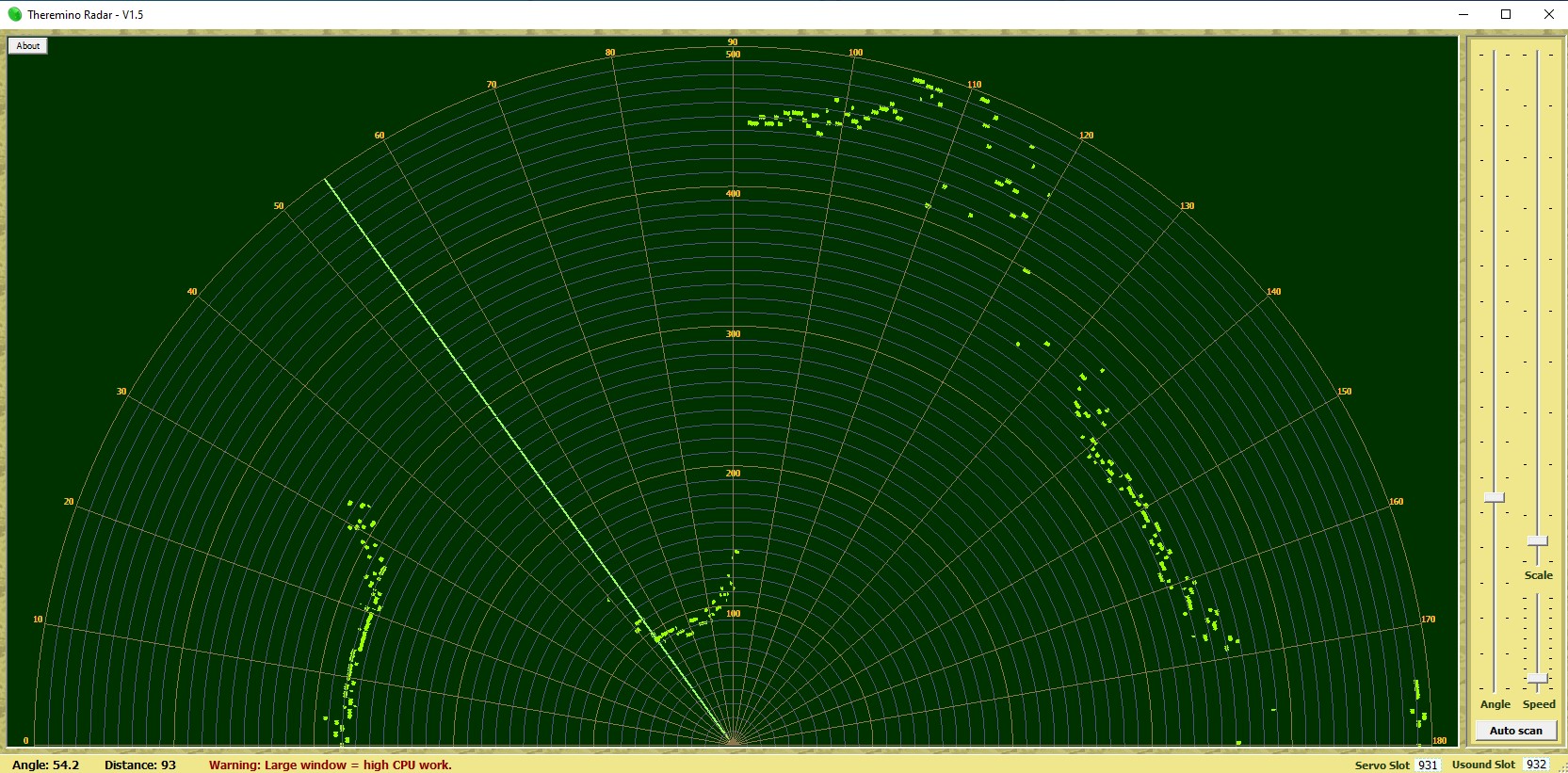
These slots need to be entered into the Theremino Hal app. On the right side of the interface there are three sliders, one for default setting of the scanning angle, the second for the scanning speed, and the third for determining the distance at which we want to scan. This distance can be changed from 10 cm to 10 m, but in our case it is limited by the limit of the sensor of 4 m. There is also an auto scan button.
Now let's see how the device works in real conditions. By starting the Theremino Radar application, Theremino Hal, which we set up earlier, is also automatically started. The scale distance should be set to equal the distance defined in theremino hall, which is currently 1m. By pressing the Auto Scan button, the scan starts. The radar-like display shows the obstacles that are placed in front of the sensor, and their distance is read on a scale of concentric semicircles.
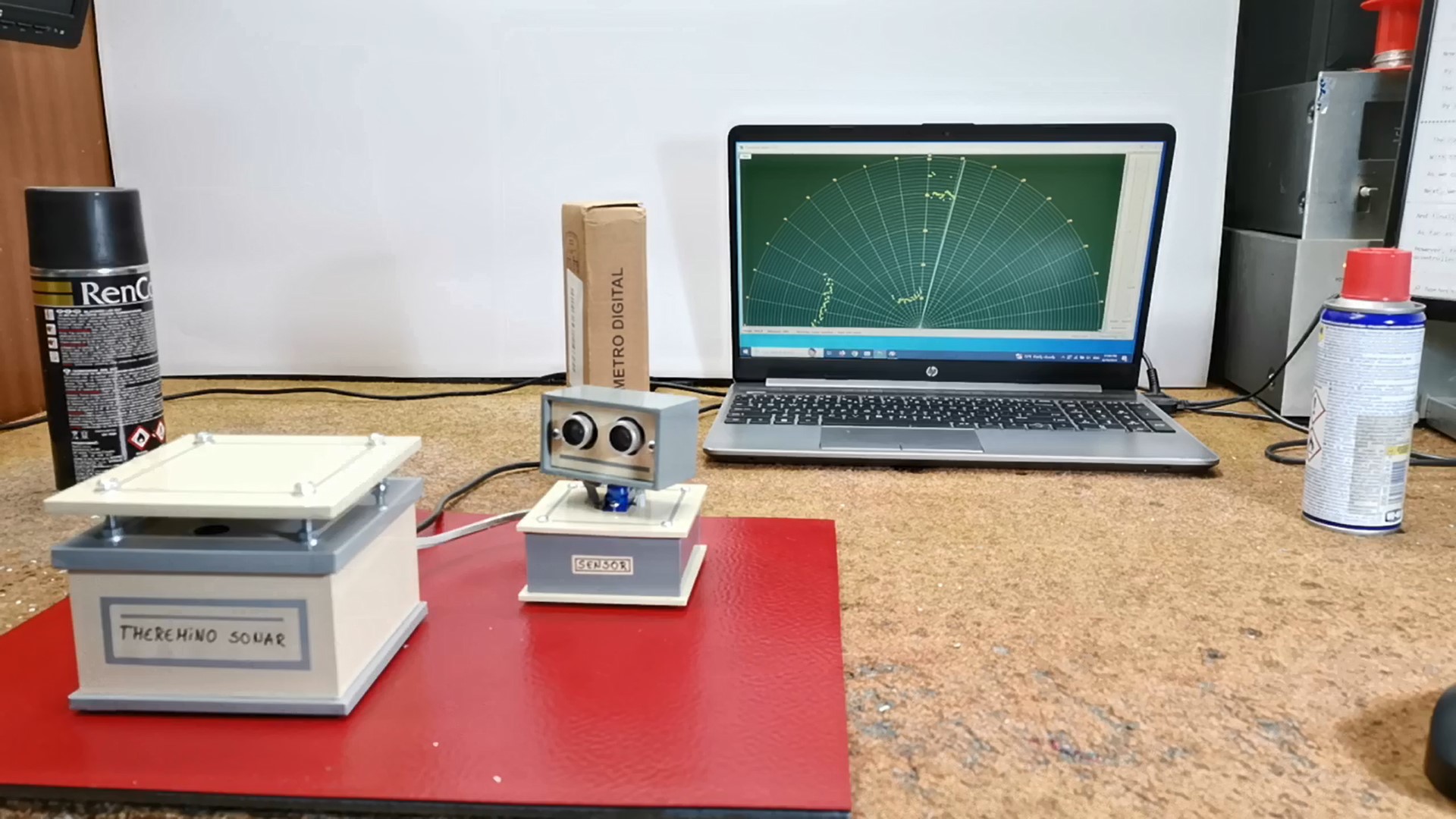
With the speed slider the speed is changed, and with the angle slider we can scan a certain range in front of the sensor. As we can see the movement of the sensor is homogeneous without jumps and shaking. Next, we'll decrease the scan distance, which will increase the accuracy of closer objects.
And finally a short conclusion. As far as I could tell, this is the first version of the DIY Radar-Look Display Sonar, based on which many Arduino versions were later made. However, this Theremino version, thanks to the stronger microprocessor and the well-made software, is in every way better than the later similar devices made with an Arduino microcontroller board. In fact, the basic feature of all Theremino projects is minimal hardware without programming and visually and functionally superior Windows software, which ultimately results in a great project.




